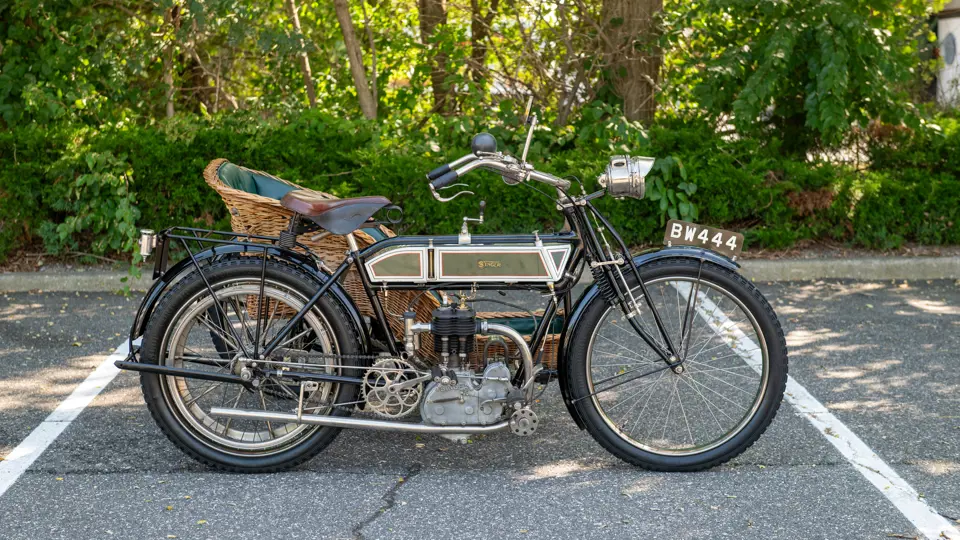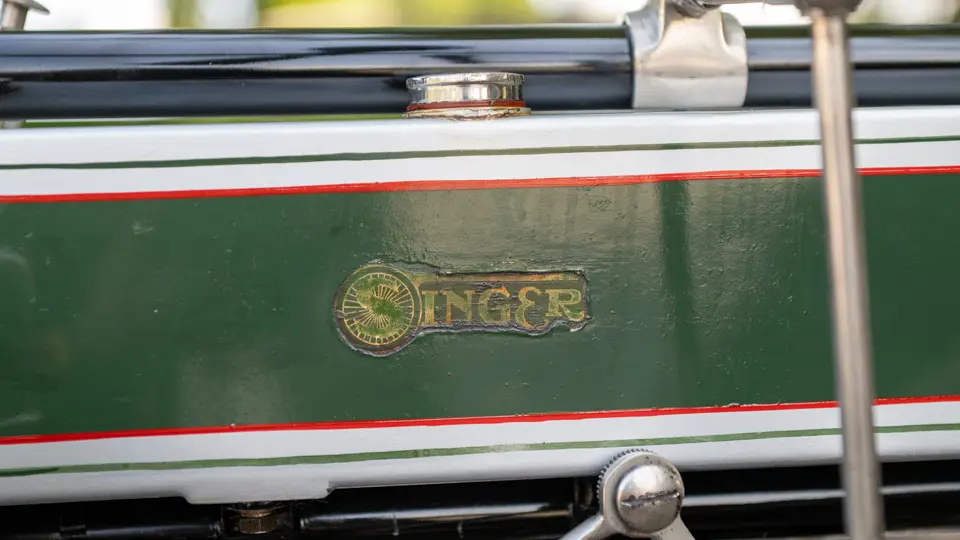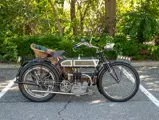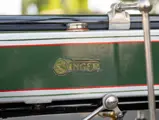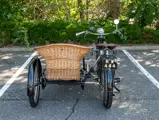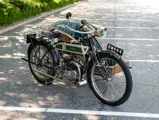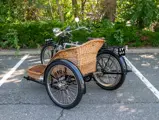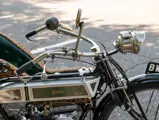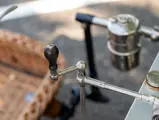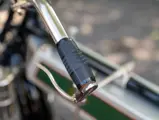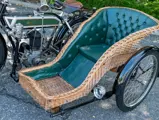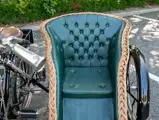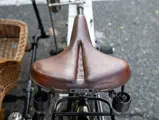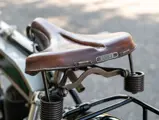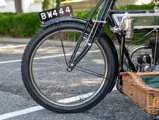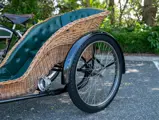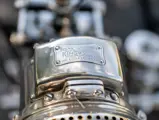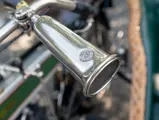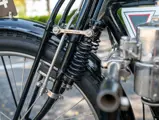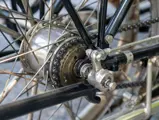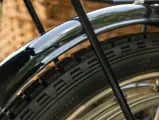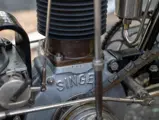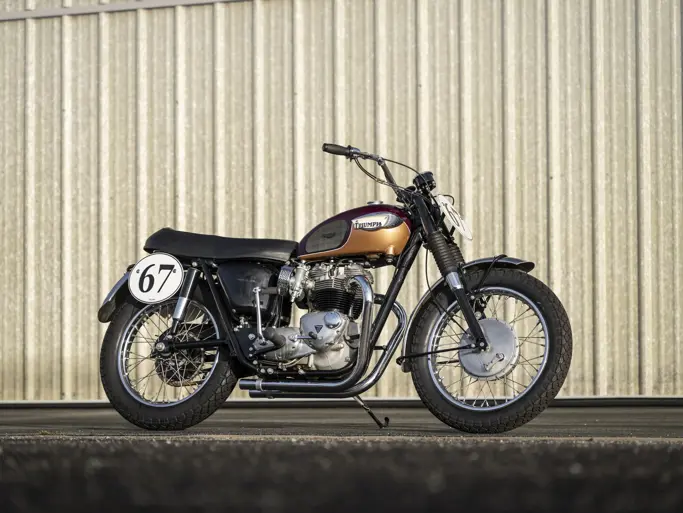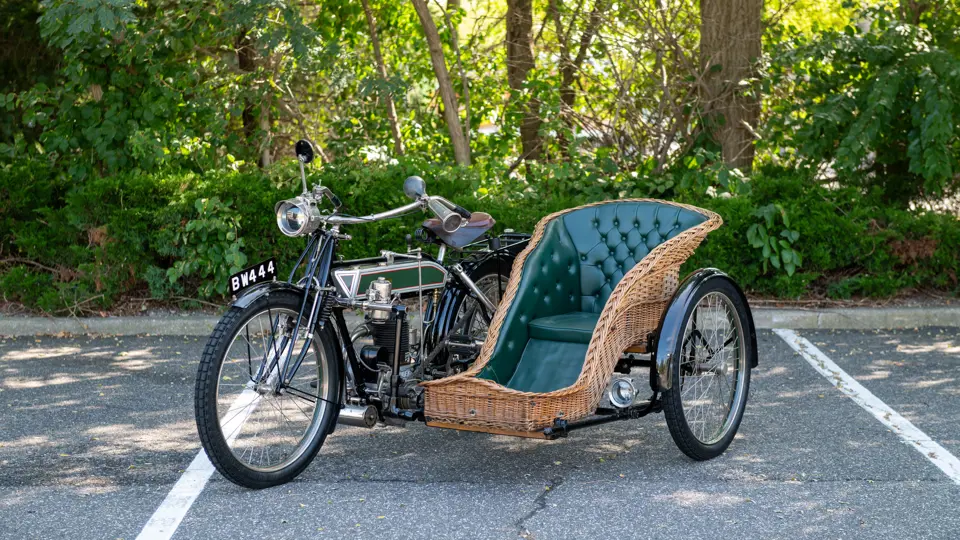
1911 Singer Motorcycle with Sidecar
{{lr.item.text}}
$28,800 USD | Sold
The Charles J. Noto Collection
{{bidding.lot.reserveStatusFormatted}}
- Offered from The Charles J. Noto Collection
- Beautifully restored example of an iconic English motorcycle
- Numerous interesting mechanical features
- Fitted with a handsomely designed, rather elegant sidecar
Established by George Singer in Coventry in 1875, his namesake company originally specialized in the production of bicycles, which were becoming a worldwide rage. Starting in 1901, his well-regarded bikes became available with a powered Motor Wheel, a cast aluminum-spoked wheel that contained a small single-cylinder engine with fuel tank, carburetor, and magneto at its hub. It was a rather wacky arrangement, but it did work. On the strength of this design, Singer moved into producing more modern, true motorcycles by 1904, which proved highly successful in competition and became as well-regarded as the bicycles had been—and then eventually into automobiles, but that is another story.
The single-cylinder Singer offered here features a bicycle-type tubular frame, with a coil and lever-dampened front fork, sprung Brooks saddle, and an engine of Singer’s own design and construction. The engine is actually fired by a system of pedals, crank, and chain drive, similar to that used on the mopeds so popular in the 1970s and, once running, delivers its power through a leather belt to the rear wheel—quite an unusual setup.
Completing the beautiful presentation of the motorcycle is a livery of black and silver with green accents and red striping, a nickel Lucas Kings own headlamp, and, of course, a beautifully made sidecar. Of unknown manufacture but quite attractively made, the sidecar is framed in steel and carries an elaborately made wicker seat with very comfortable button-tufted leather upholstery, and is supported by its own third wheel with a fender matching the Singer.
Singer motorcycles are fairly rare on this side of the Atlantic, especially in the condition of this example, which is of the same high standard of presentation, fit, and finish as the other vehicles in Charles J. Noto’s Collection. It is undoubtedly one of the nicest available and would be a wonderful accent to a Brass Era vehicle collection, or to fire up and begin exercising as its manufacturer would have intended.

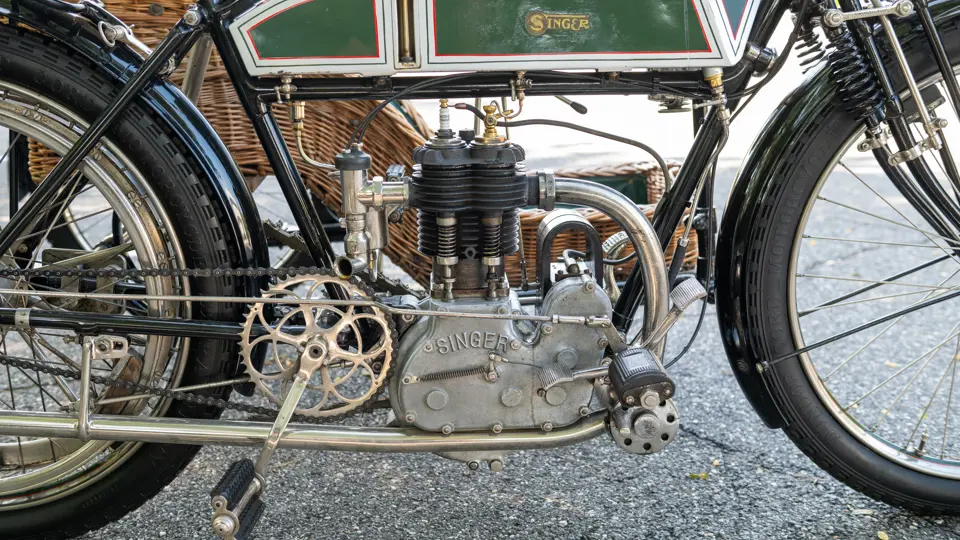
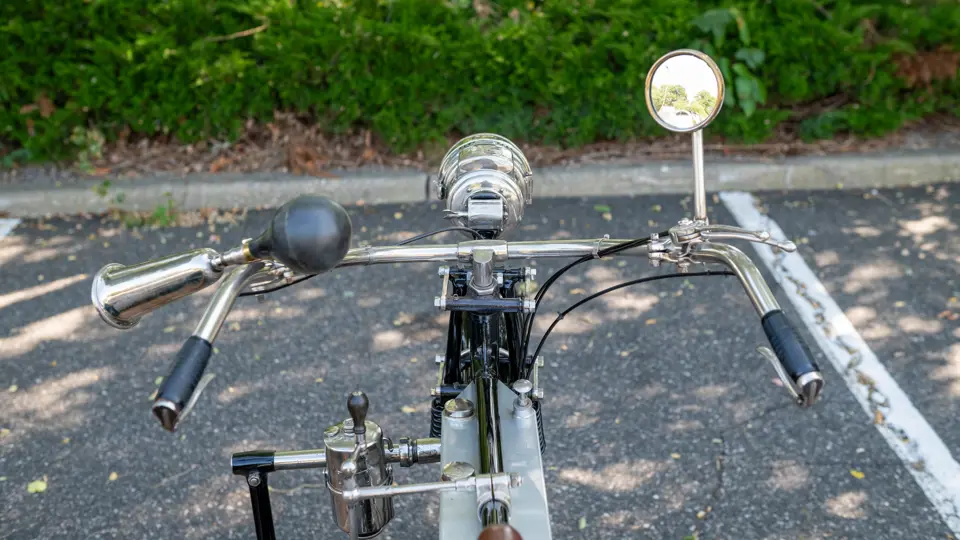

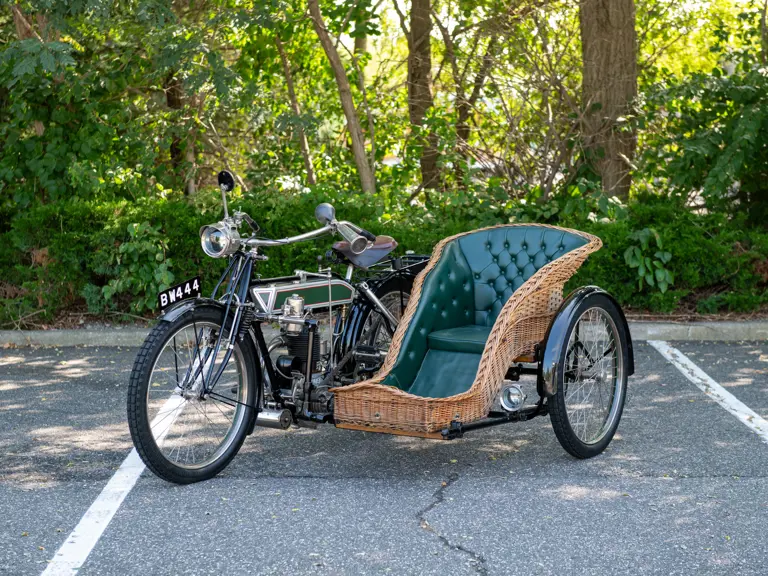
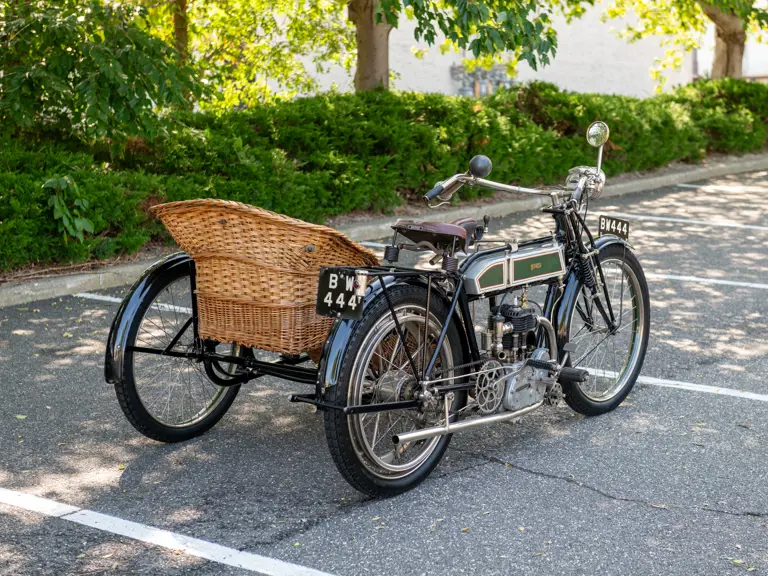
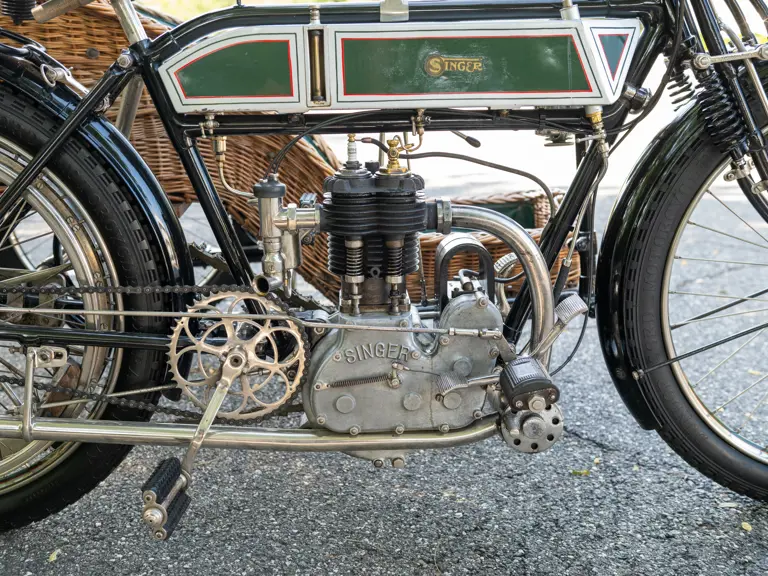
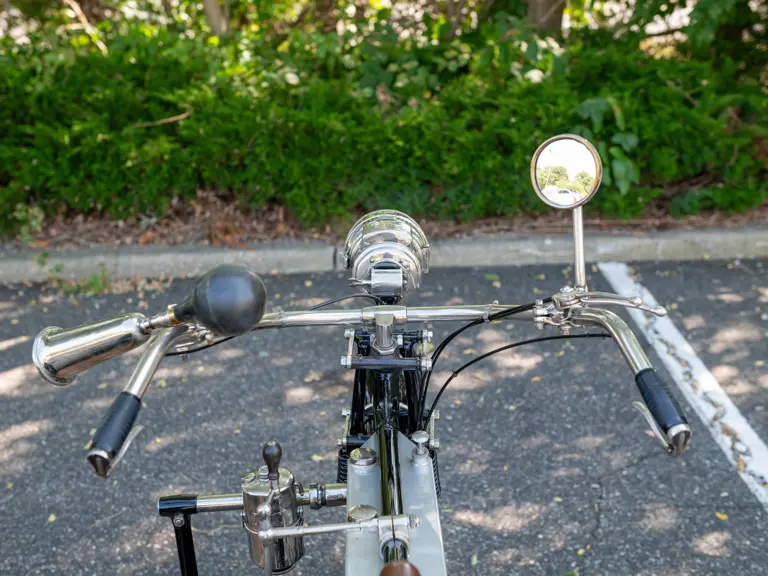

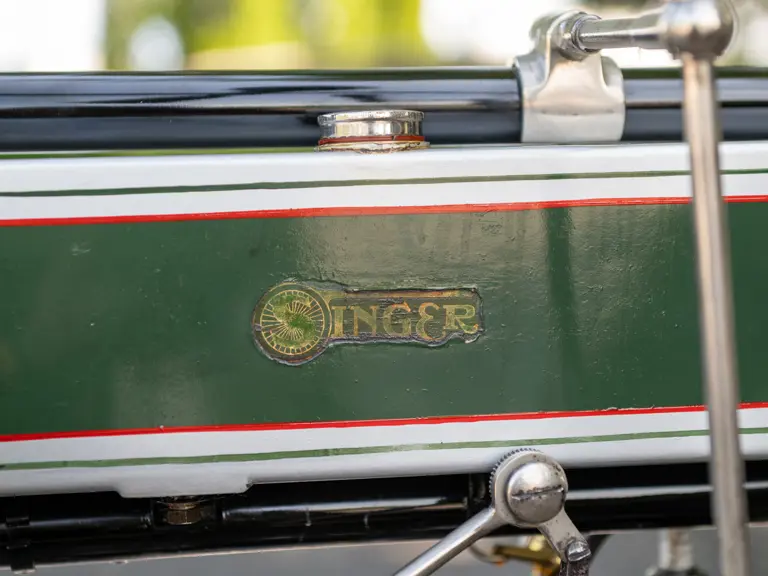
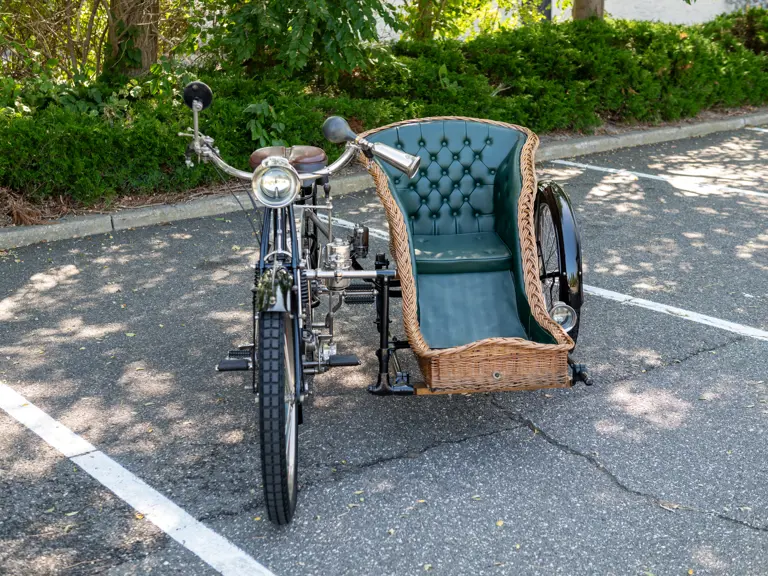


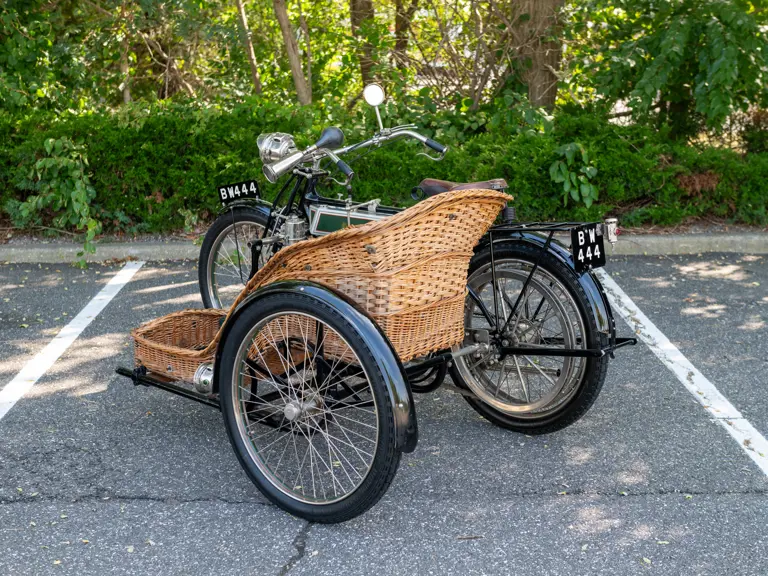
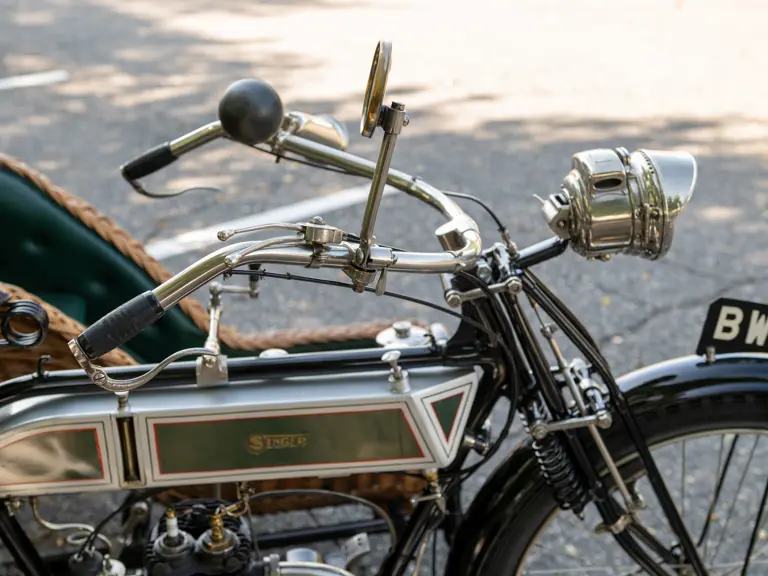
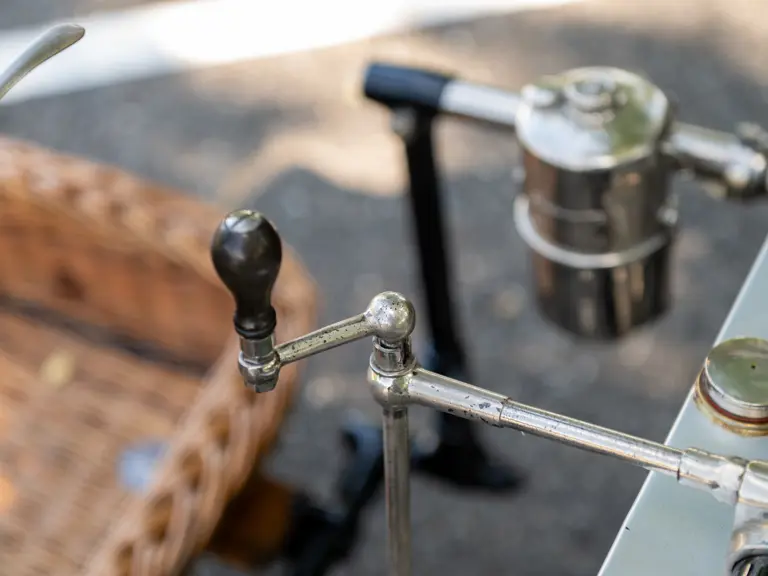
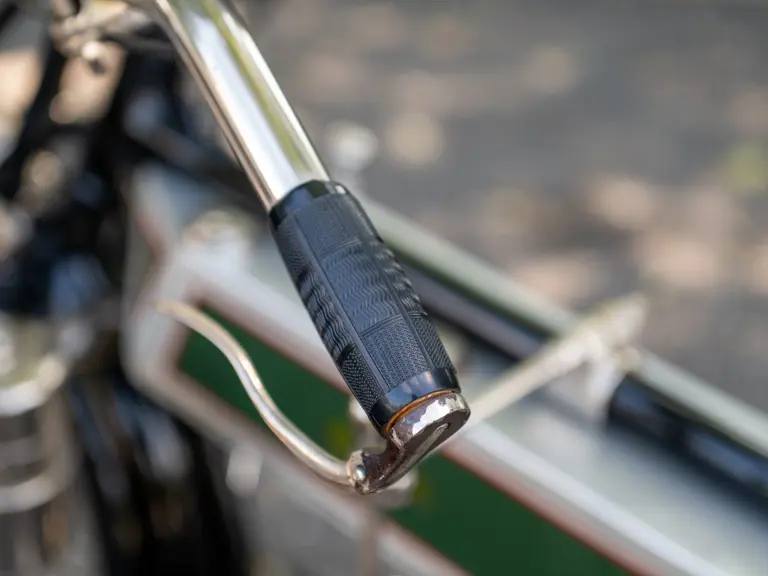
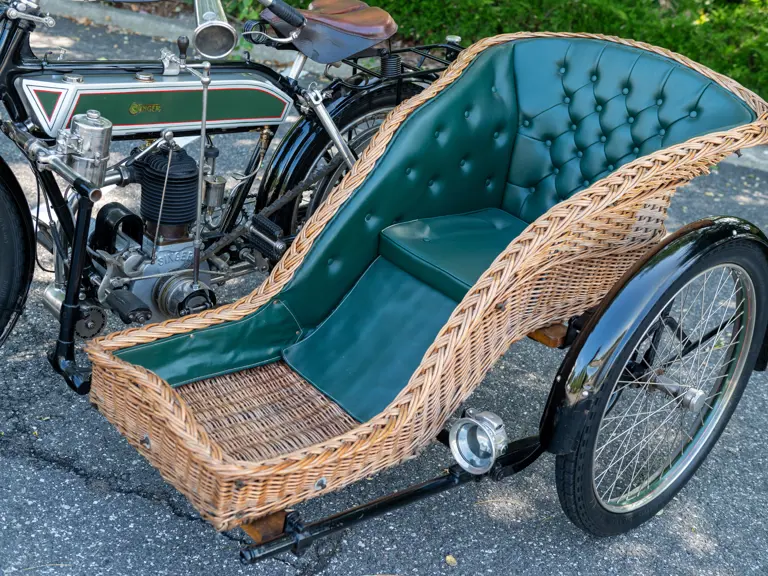
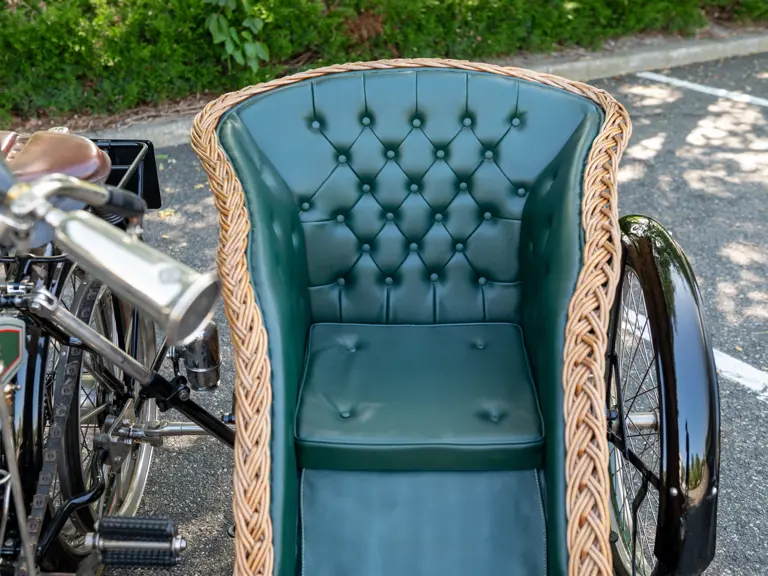

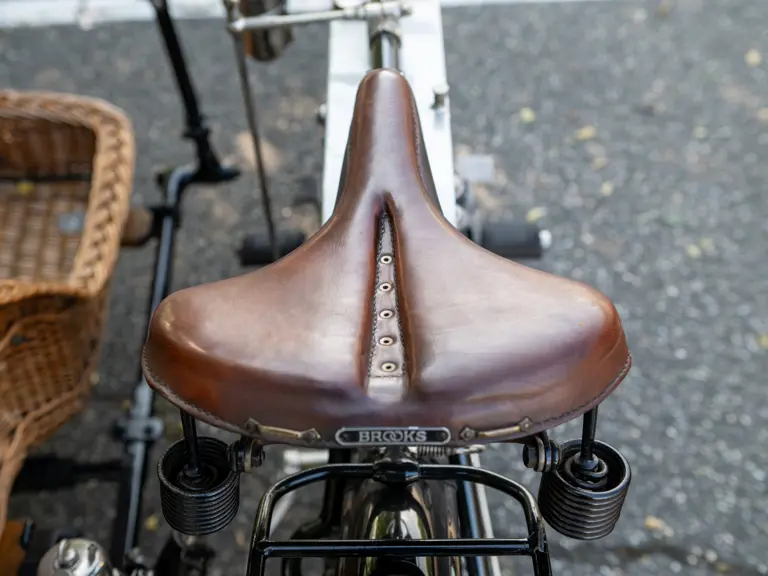
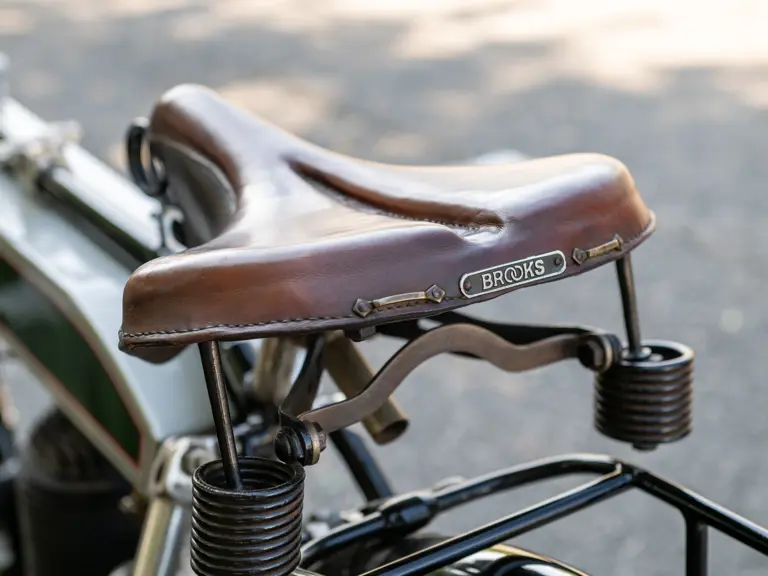
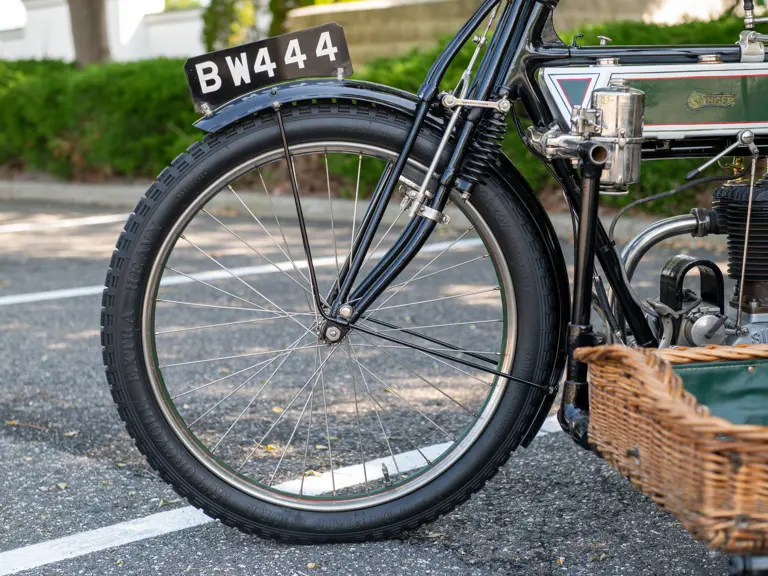
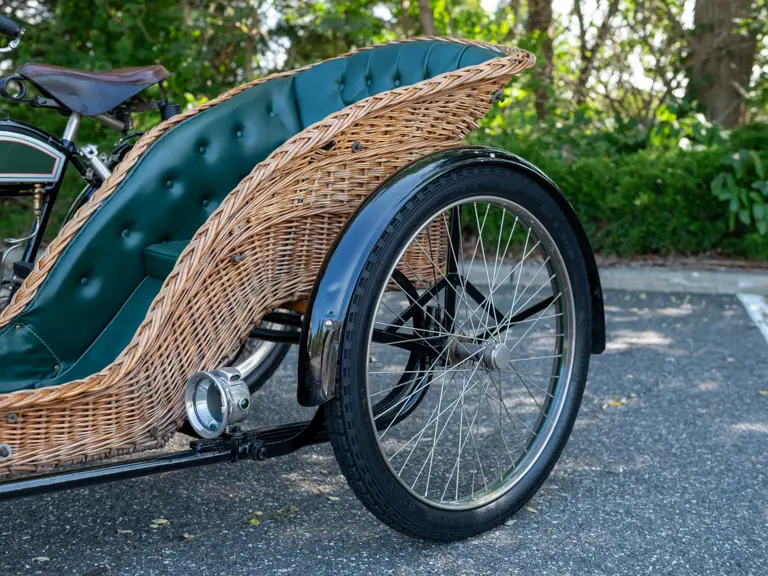
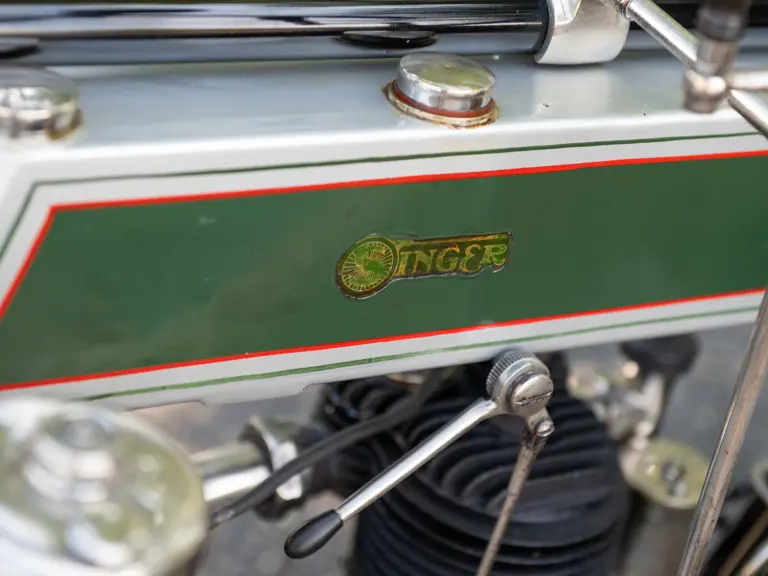
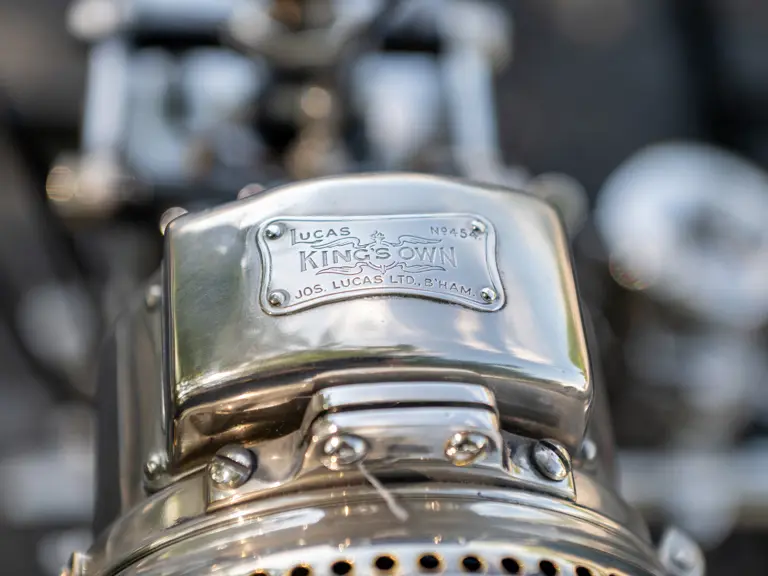
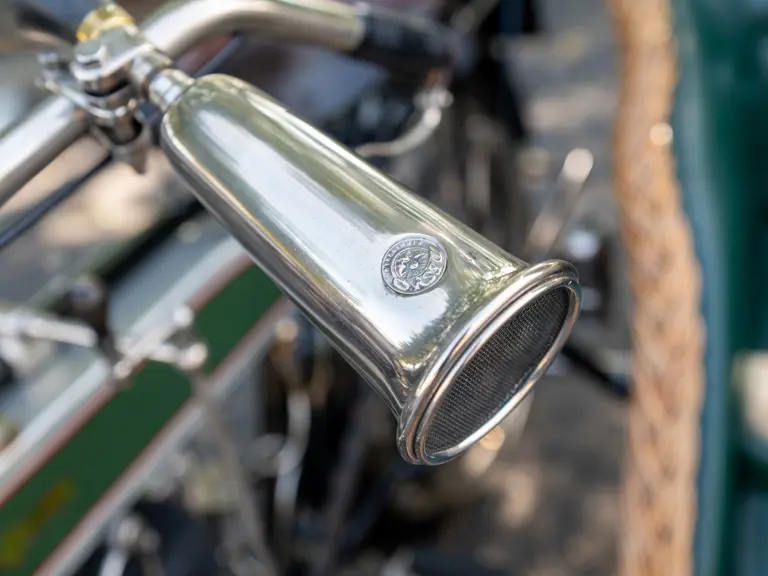
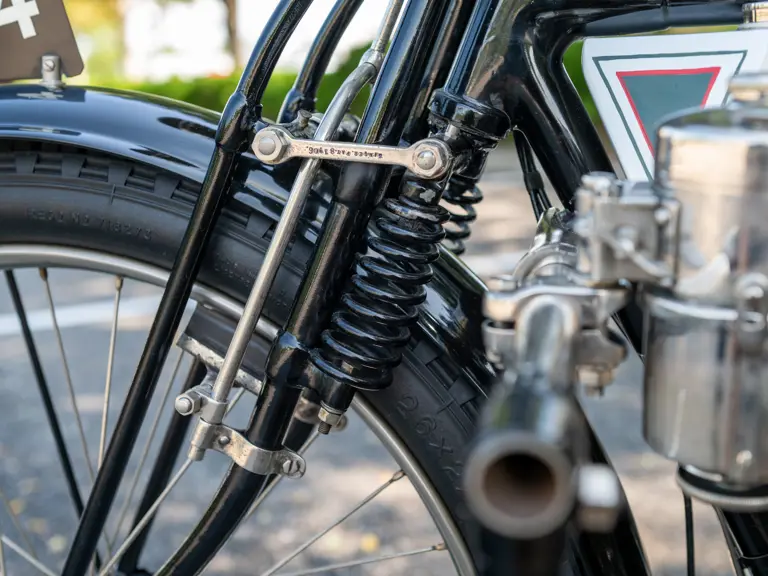

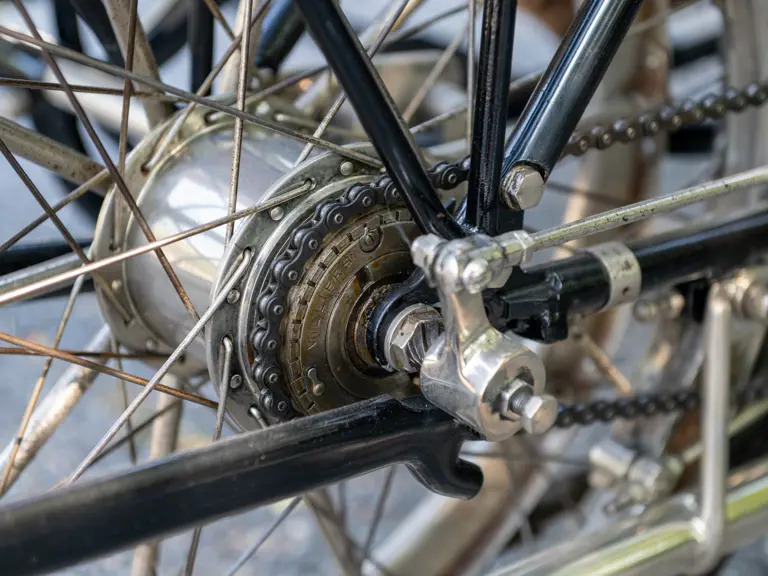
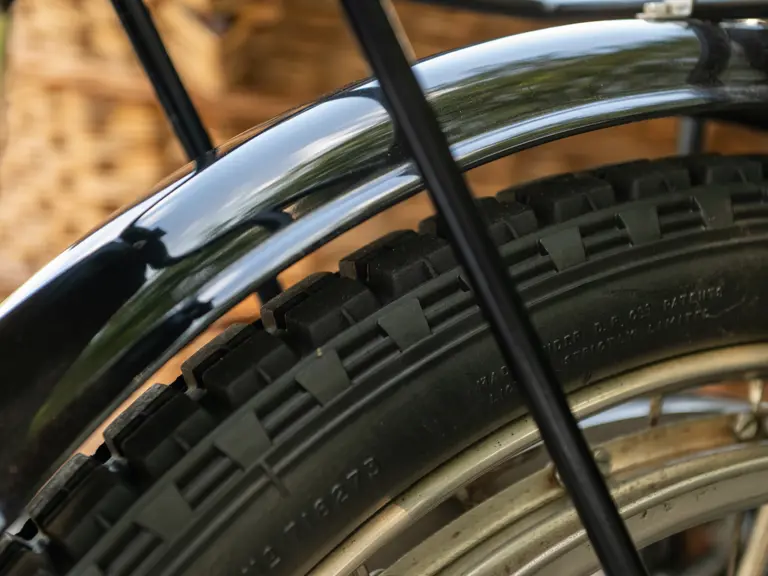
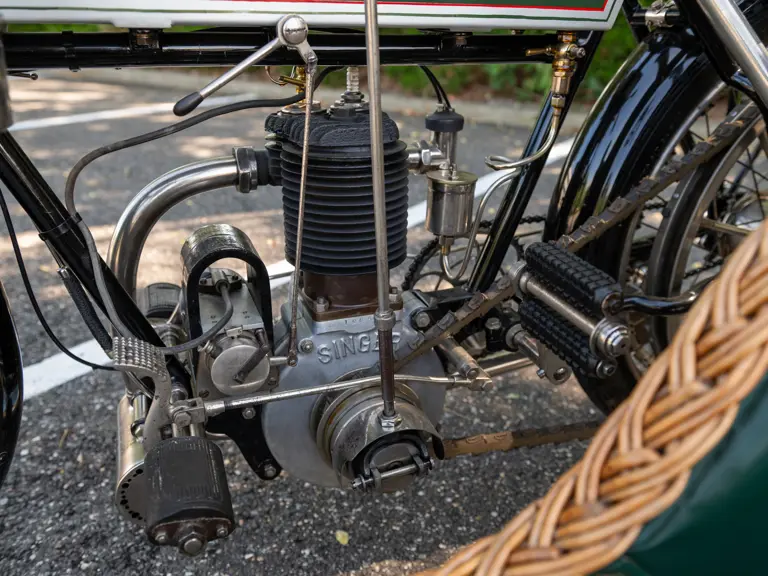
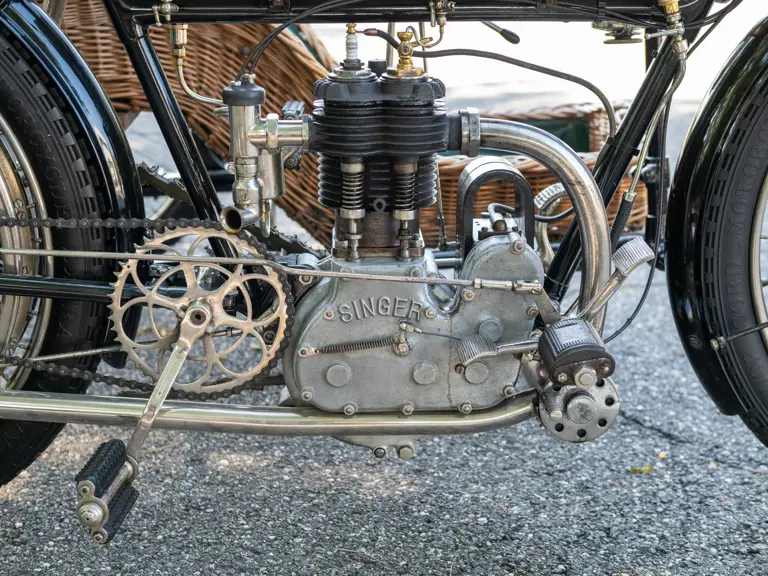
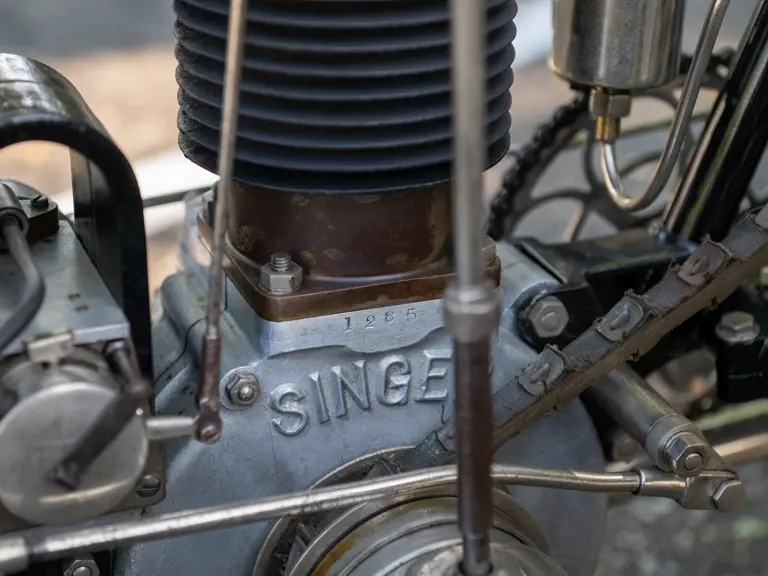
 | Hershey, Pennsylvania
| Hershey, Pennsylvania
